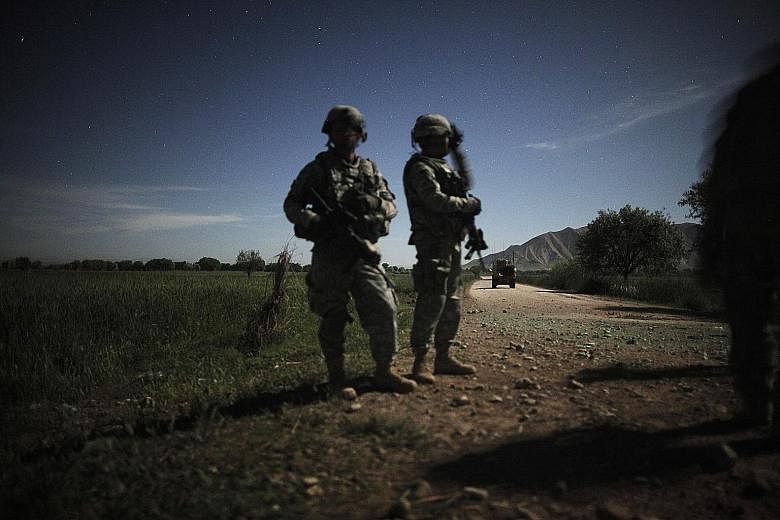WASHINGTON • The platoon of Army Special Operations soldiers was on a routine night patrol in eastern Afghanistan when one of them suddenly opened fire on what looked to the others to be a bush.
The bush, it turned out, had been obscuring a militant fighter.
He was detectable only to the one platoon member wearing prototype night vision goggles that could detect heat signatures - a happenstance that US Army officials say probably saved many lives.
That incident took place in 2015.
Three years later, soldiers in the field still do not have the new night vision goggles, and that is just one example of a process that can take a decade to get new weapons from the lab to the hands of troops.
Worried about that lag, the US Army is creating a new and decidedly unconventional department to address it: the Futures Command.
"Washington and Marshall are looking over me like ghosts," said Mr Ryan McCarthy, a former Ranger who is now the army's undersecretary, in a reference to George Washington and George Marshall, two of the most famous proponents of a US Army that keeps ahead of all adversaries. "Things can take too long; historically services will experiment things to death and never buy anything, or don't experiment and then buy a billion-dollar PowerPoint. We have to move away from that," said Mr McCarthy.
On March 26, top US Army leaders will travel to Huntsville, Alabama, to announce details of their plan for the Futures Command, which will focus solely on developing new weapons and getting them "downrange" faster.
The doors of the command are expected to open by the end of July, and it is supposed to be fully operational a year after that.
The Futures Command, US Army leaders say, is part of a movement to get the army, focused for nearly two decades on fighting Islamist militants in Afghanistan and Iraq, back in shape to fight a potential great-power land war.
At the Pentagon, the talk inside the military's biggest service is all about modernisation and readiness, the favourite children of the Army chief of staff, General Mark Milley.
US army leaders want to get rid of layers of bureaucracy that can eat away at the military's competitive edge, by allowing adversaries to catch up with US advances while they are caught up in red tape.
And they want to enlist the talents of Americans who may not see themselves as bound for the military, by locating the Futures Command not at a traditional military base but in a city with easy access to big universities and cutting-edge technological research.
Seattle, San Francisco and Boston are among the cities US Army planners say they are looking at for the Futures Command.
Mr Mark Esper, secretary of the US Army, said that whoever is chosen to lead the command will be "not a traditional person who spent all their time in combat units, but someone who understands the acquisition process, and who understands the corporate Army".
NYTIMES

